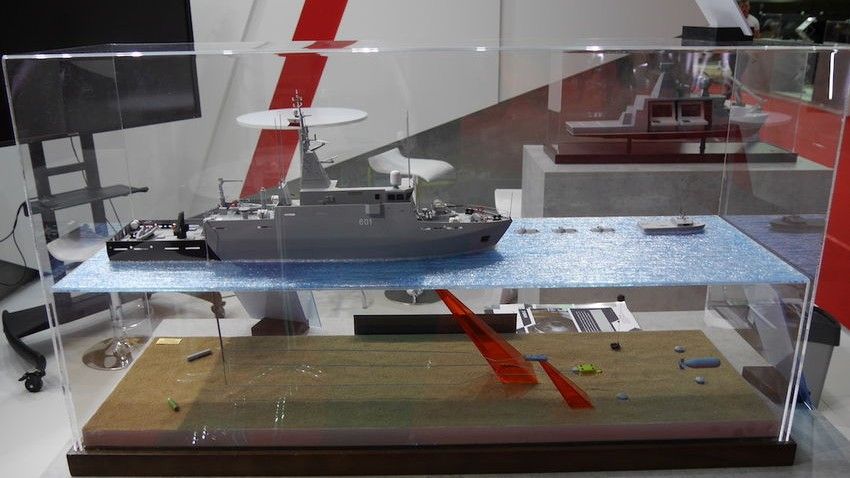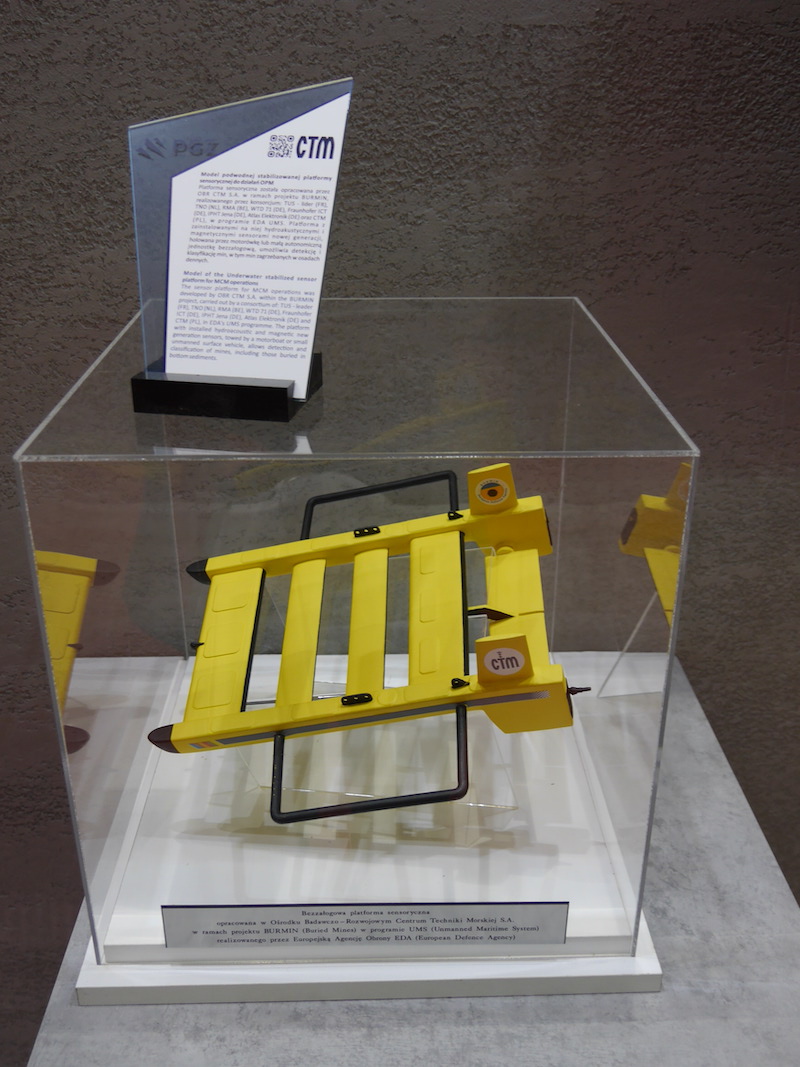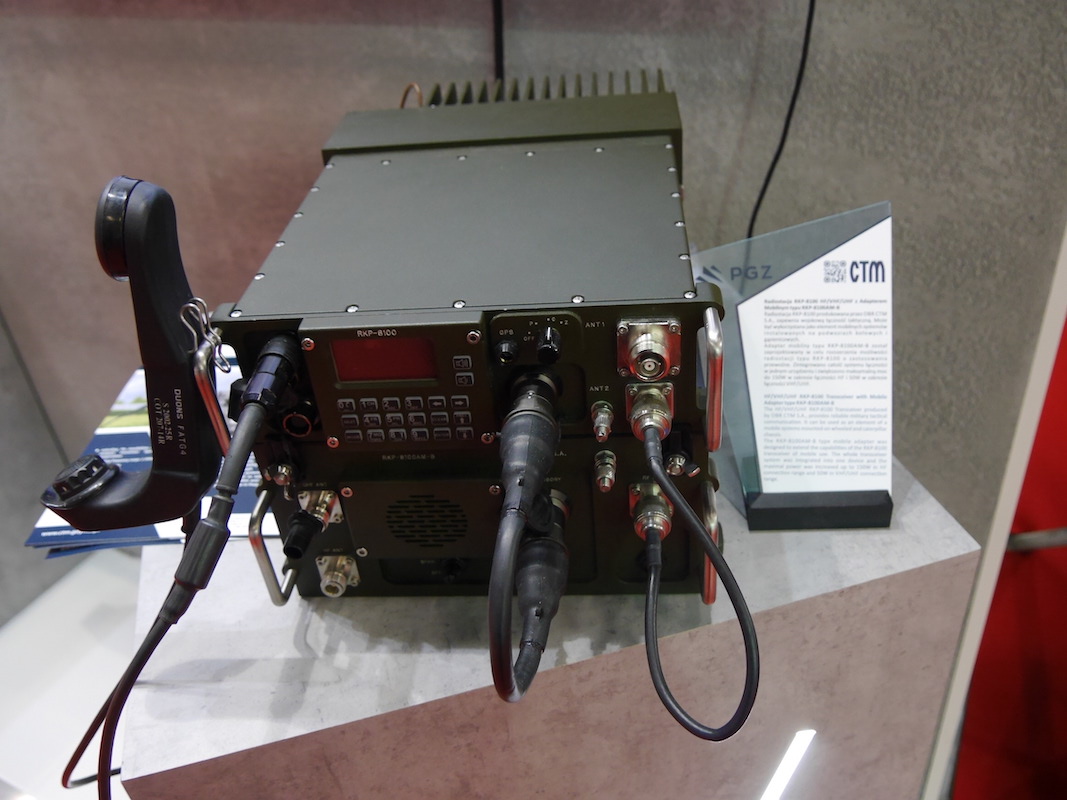Strona główna
MSPO 2019: OBR CTM S.A. As a Technological Trendsetter in Defence and Security

Technological change has become an indispensable element of the global trends. The defence industry has always been the pioneer in the area of innovation. MSPO 2019 Kielce is a perfect place to present new products that emerge on the defence market. OBR CTM S.A. company (Research and Development Center - Center for Maritime Technology) based in Gdynia is showcasing its current and fresh products and solutions in this domain. OBR CTM S.A. booth gives the visitor an idea of the direction towards which the company is going to push its land and naval systems designed for the Polish military.
Systems designed for the Kormoran II minehunter play the primary role within the OBR CTM S.A.’s exhibition space in Kielce. Kormoran is is the first warship that has been built in Poland since a long time now. Thanks to the multimedia presentations the visitors may get acquainted with the SCOT-M battle management system integrating all of the systems embedded onboard (anti-aircraft, anti-surface and underwater warfare assets, as well as the means to act against asymmetric threats, observation system, comms suite and integrated navigation suite). SCOT-M is used to create a homogeneous situational picture and to carry out tasks such as mission planning and decisionmaking.
Not only is the minehunter-specialized system presented in Kielce (SCOT-M) as OBR CTM also showcases a general-purpose solution for a variety of vessel types operated by the Polish Navy. SCOT is a universal systemic platform that can be used in other vessel programmes planned by the Polish Navy. It may thus be employed beyond the minehunting domain.

AR mock-up of a vessel is an interesting highlight of the company’s booth in Kielce. The presentation showcases the potential and capabilities that remain at hand of the OBR CTM S.A., in the area of creating dedicated Augmented Reality applications. This technology may be used to present the systemic and spatial solutions or to create simulators or other design/visualization support systems.
System for Monitoring and Minimizing the Vessel’s Physical Signatures (Passive Defence System) is another solution used on the Kormoran II MCMV and showcased in Kielce. The task assigned to this system is to monitor and minimize the underwater (magnetic, electromagnetic) and surface (IR) signatures of the vessel.

Minimizing these signatures makes it possible to diminish the risk of triggering non-contact fuses of naval mines and IR-guided armament sensors. The Passive Protection System also features a modern Vessel Degaussing System and Multi-Sector Cathode Protection Station. Both elements make it possible to diminish the signatures down to the level compliant with the NATO requirements concerning the MCMVs. The function of monitoring the magnetic or electric and hydroacoustic signatures supports the command system through visualizing the safe zones in the process of detecting, classifying and identifying the naval mines.
OBR CTM S.A. is also working on other systems that can be employed alongside the minehunters. The following products have been showcased in Kielce:
- MLM Modular Minesweep model - designed to act against naval mines with non-contact fuses, the operation of which depends on identification of a specific vessel on the basis of its specific signatures;
- Underwater stabilized sensor platform for mine countermeasure operations model - the platform in question has been designed for minehunting operations and it is a detection asset, allowing the user to detect mines buried in the bottom sediments as well. The platform in question has been developed by OBR CTM S.A. within the framework of the BURMIN project that is worked on by a consortium: TUS - leader (FR), TNO (NL), RMA (BE), WTD 71 (DE), Fraunhofer ICT (DE), IPHT Jena (DE), Atlas Elektronik (DE) and CTM (PL). The work is done within the scope of the EDA UMS programme. The sensor-carrying platform features new generation hydroacoustic and magnetic sensors. It is towed by motorboats or a small, autonomous unmanned vessel.

Other solutions presented in Kielce can be employed to heighten the security levels for naval bases and harbours with regards to terrorist threat in a form of divers or small submersibles. The Gdynia-based research centre has developed both sensors as well as effectors making it possible to counteract any potential threats.
PMB (Portable Magnetic Barrier) acts as the sensor. It monitors, in a continuous and automated manner, the underwater situation in the areas adjacent to naval bases and ports, thanks to highly sensitive magnetic transducers installed at the sea bottom. The sensors make it possible to detect local magnetic anomalies caused by the underwater objects suddenly appearing in the vicinity (such as - divers). Explosive effectors may be integrated with a system designed for detection of underwater target detection system.
The effectors are used to generate an underwater shockwave. Depending on the weight of the explosive, the shockwave may be lethal or non-lethal.

OBR CTM S.A. also presented its communication solutions within its booth at MSPO:
- HF/VHF/UHF RKP-8100 tactical backpack radio. The radio has been fitted with an AES-256 compliant encrypting module, it is capable of operating in a “frequency hopping” mode, it may be also used as a building block of the Link-11 data transfer suite. It does not really require an expansive supply chain as well.
- RKP-8100 radio may be used as an element of the mobile radio-communications systems mounted onboard the wheeled and tracked-chassis platforms, along with the RKP-8100AM-B mobile adapter;
- The applied RKP-8100AM-B mobile adapter expands the capabilities of a backpack radio, transforming it into a device which may be utilized within the framework of mobile applications. Moreover, the adapter makes it possible to increase the maximum power output (up to 150 Watts in the HF band, and 50 Watts in the UHF band), and to increase the reliability of communications in conditions of collocation (thanks to the fact that additional narrow-band filtering system is applied, covering the whole HF band and selected frequency ranges of the UHF band: 30–88 MHz and 225–400 MHz).
